Nicolas & Lena Remy: Sydney
Diving was a major driver of our relocation to Australia: we wanted easy access to dive sites and a diverse, photogenic marine life to fulfill both wide-angle and macro aspirations. Since we planned on getting wet every week, diving had to be local and economical (read: shore-dives preferred). To the surprise of some, this saw us land in Sydney. Let me explain what makes diving so special there.
From the Royal National Park in the South to Sydney’s northern suburbs, no less than three river estuaries meet the South Pacific Ocean. In and between these, a mix of sandy beaches and dramatic sandstone cliffs shape the water edge and provide shelter from ocean swells. Aside from a handful of storms per year, this means there are always a few locations safe to dive. More than 30 dive sites are accessible from shore in good weather and twice as many from boats.
Despite its latitude, Sydney’s waters are relatively warm, ranging from 12-15 degrees Celsius in winter to 21-24 degrees in summer. This is a courtesy of the East Australian Current (EAC), which flows southward from Tropical Queensland, bringing in warmer waters. The EAC also carries larva from tropical species, such as bannerfish, lionfish, and even ornate ghost pipefish! Whilst these may not survive the southern winter, they complement temperate critters only found in the southern half of Australia: friendly blue gropers, fiddler rays, weedy sea dragons, to name a few. All-in-one, Sydney’s marine life is diverse, with large animals such as wobbegong sharks and popular macro critters, including three species of frogfish.
In terms of dive profiles, Sydney’s shore dives sit between 5 and 25 meters depth, majority shallower than 15 meters, while boat dives are found in any depths, with several wrecks in the 40-50 meters range. The underwater scenery includes walls, boulders, lush sponge gardens, muck dives, and even wrecks. Visibility varies depending on the site and weather conditions: ocean-facing sites tend to have clearer blue water than sites from inner bays, but this will really depend on the height and direction of the swell and recent rains. All-in-one, 10-15 meters visibility in Sydney is considered pretty good, 5-10 meters is more standard, but with 3 rivers, many bays, and some tidal currents, it really is location-dependent.
Fast-forward four years, I am now convinced that Sydney boasts the best local diving that can be found in any international metropolis and is a great diving destination on its own.
To see more of Sydney’s underwater photography from Nicolas and Lena, visit their website.
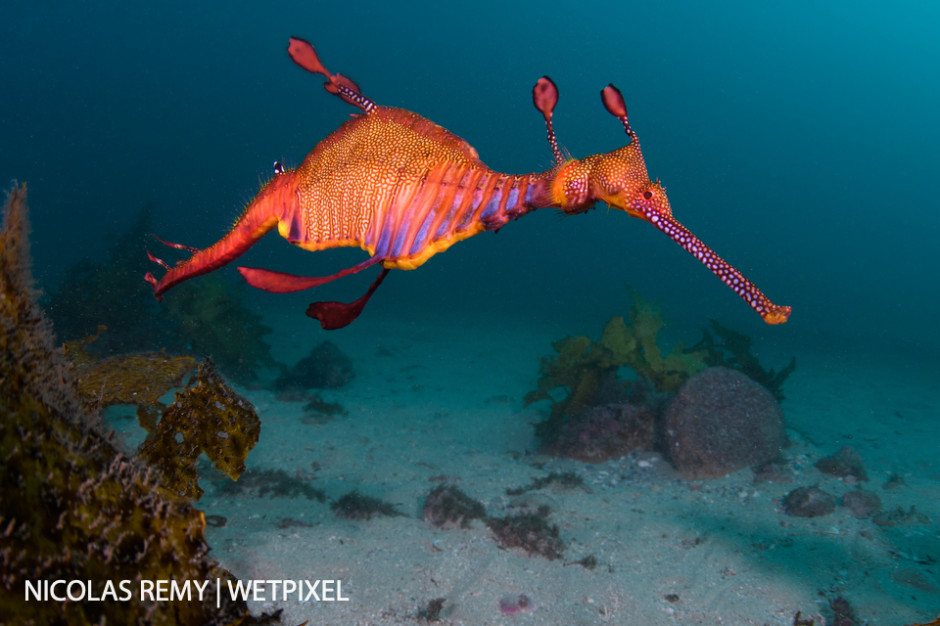
A weedy seadragon (Phyllopteryx taeniolatus), another fascinating animal that is endemic to Australia. The Monuments, Kurnell (south Sydney).
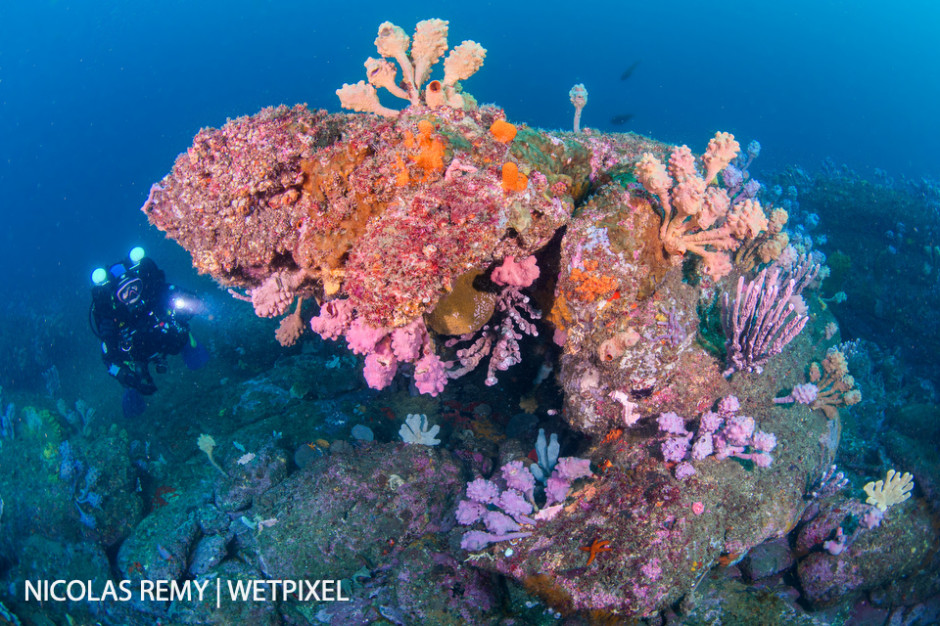
Various sponges species, such as sea tulips (Pyura spinifera) color Sydney's temperate reefs. Old Man's Hat, Manly (North Sydney).
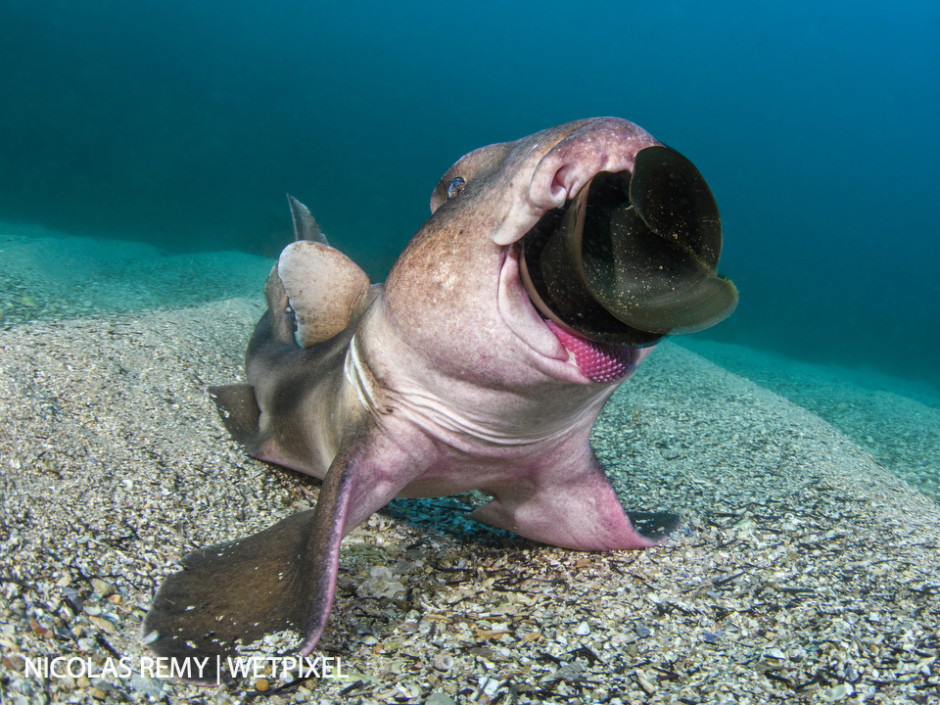
Crested-horn sharks (Heterodontus galeatus) sometimes feed on eggs from Port-Jackson sharks (Heterodontus portus jacksoni), a similar-looking yet larger species of bullhead shark. Cabbage Tree Bay, Manly (North Sydney).

Supermacro portrait of a Sydney's pygmy pipehorse (Idiotropiscis lumnitzeri), a species measuring less than 5 cm. The Leap, Kurnell (south Sydney).
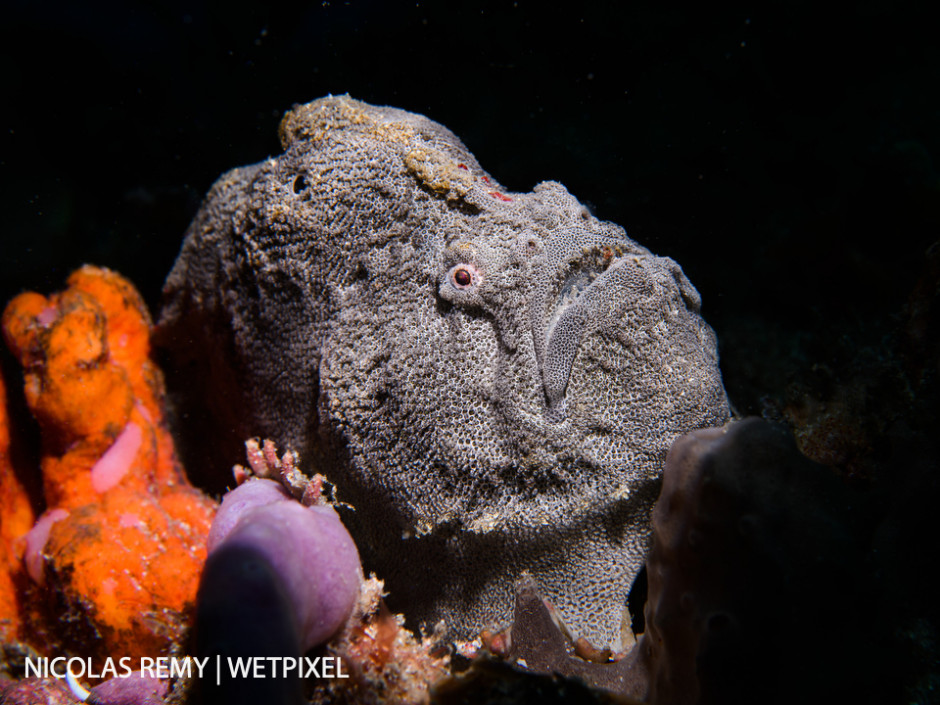
The red-fingered anglerfish (Porophryne erythrodactylus) is a species of frogfish, only observed in Sydney and up to 200km south of Sydney. The Monuments, Kurnell (South Sydney).
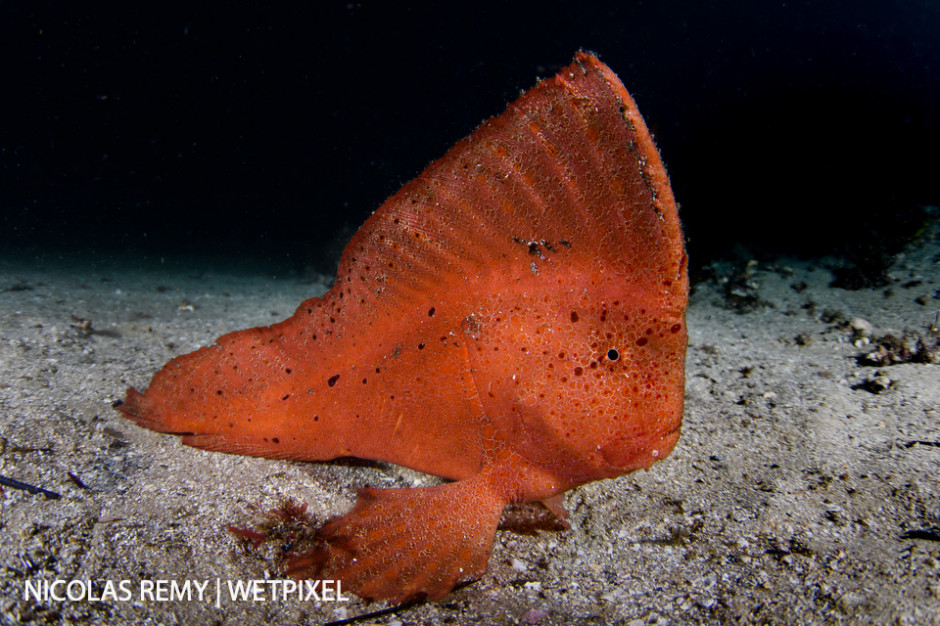
A red indianfish (Pataecus fronto) observed during a night dive. Bare Island, La Perouse.
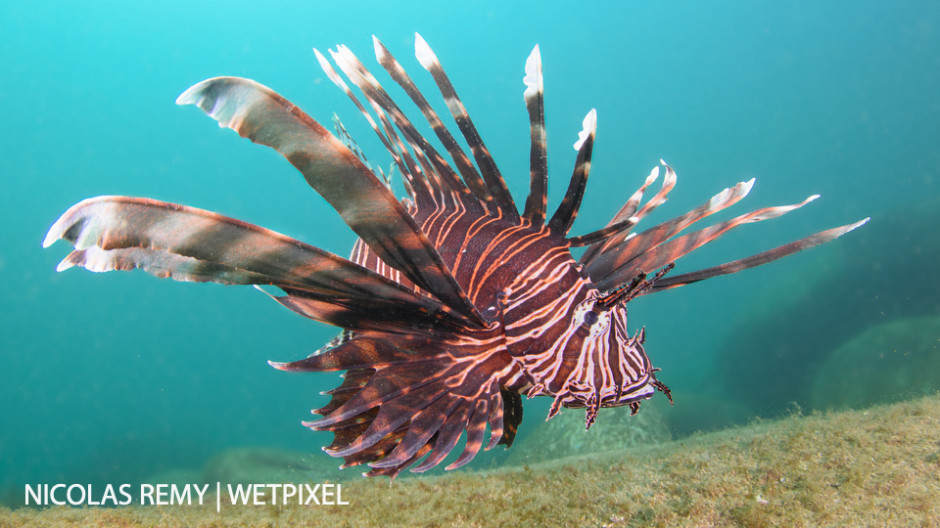
Some tropical species like this common lionfish (Pterois volitans) travel in larvae stage via the East Australian Current, and make it to Sydney. Bare Island, La Perouse.
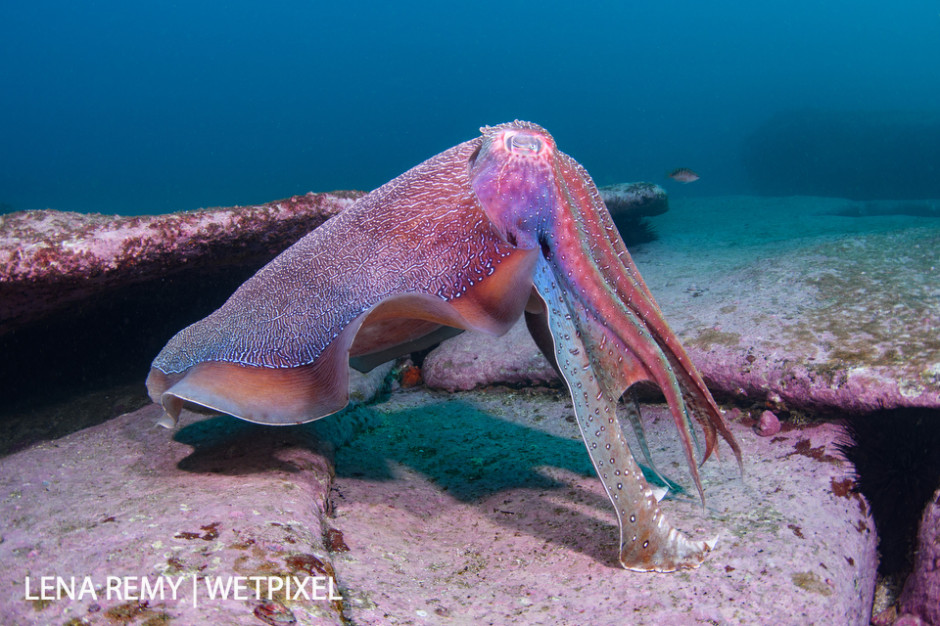
A male giant cuttlefish (Sepia apama) on purple rocks. These rocks' colour is due to the corraline algeae which covers them. Voodoo, Kurnell (South Sydney).
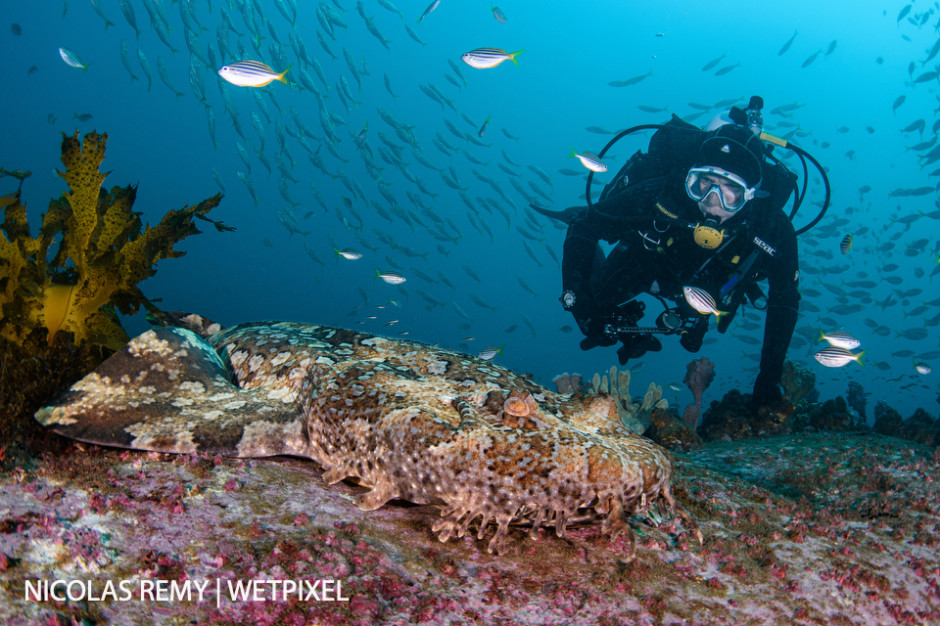
My buddy observing a gulf wobbegong (Orectolobus halei), which is a species of carpet shark. Cabbage Tree Bay, Manly (North Sydney).
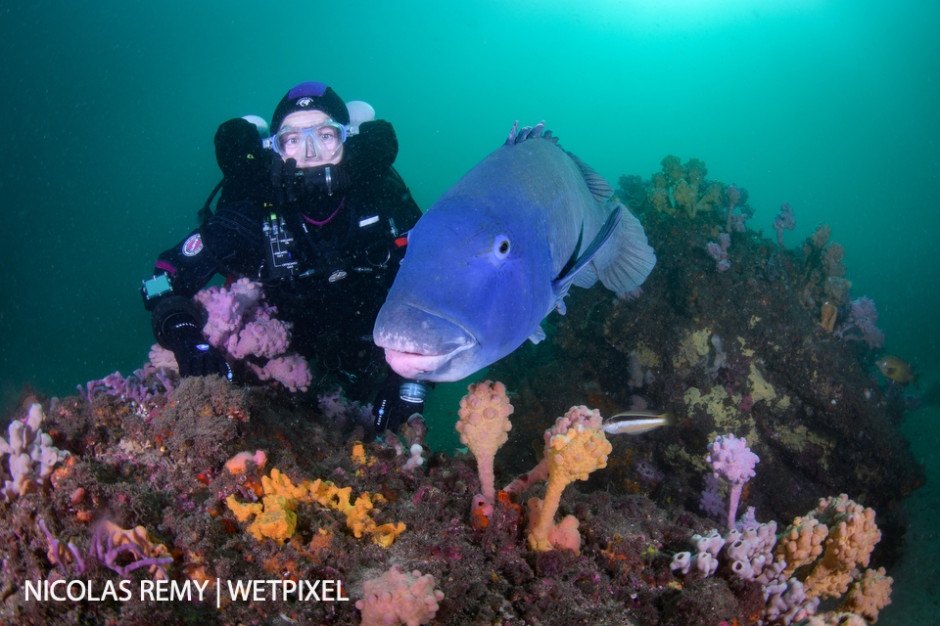
The friendly blue grouper (Achoerodus viridis) often approaches divers. It is the fish emblem of New South Wales, protected since 1998. Bare Island, La Perouse.

school of Eastern Australian salmons (Arripis trutta) at dusk. Cabbage Tree Bay, Manly (North Sydney).
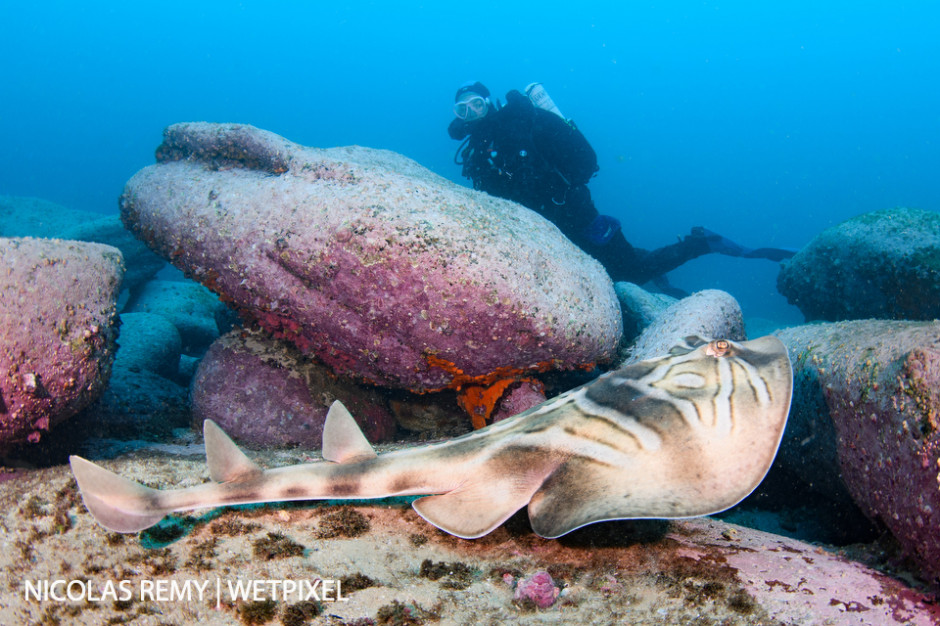
An eastern fiddler ray (Trygonorrhina fasciata), also called banjo ray. Cabbage Tree Bay, Manly (North Sydney).
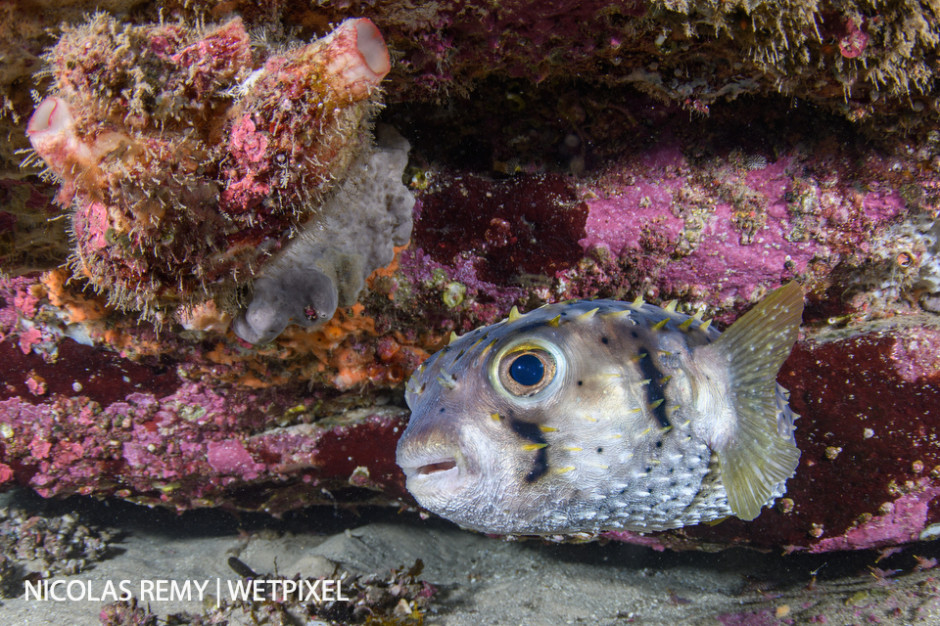
A threebar porcupinefish (Dicotylichthys punctulatus) hides under a ledge. Cabbage Tree Bay, Manly (North Sydney).
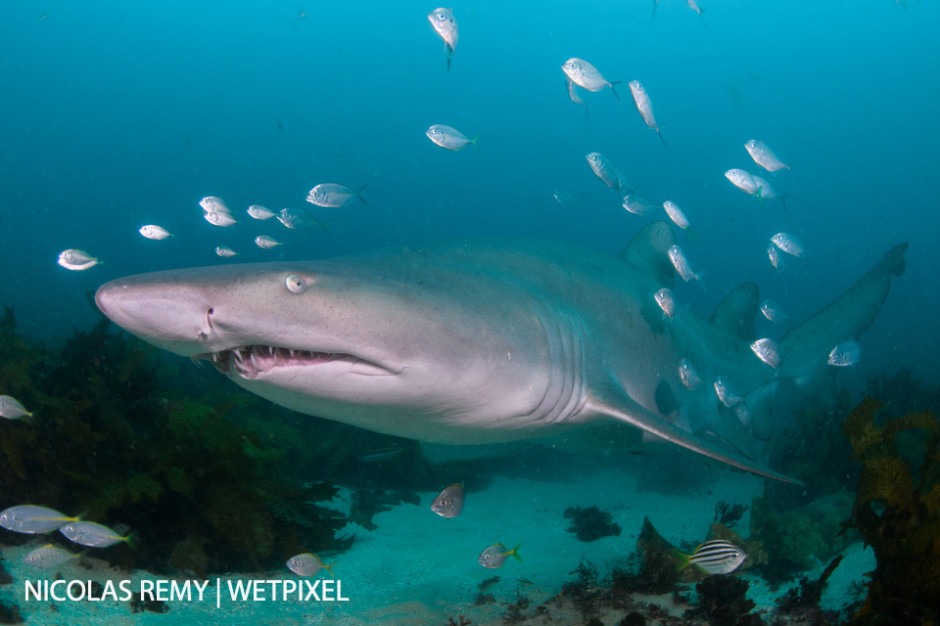
A grey nurse shark (Carcharias taurus), also called ragged-tooth shark or sandtiger shark in other parts of the world. Cabbage Tree Bay, Manly (North Sydney).
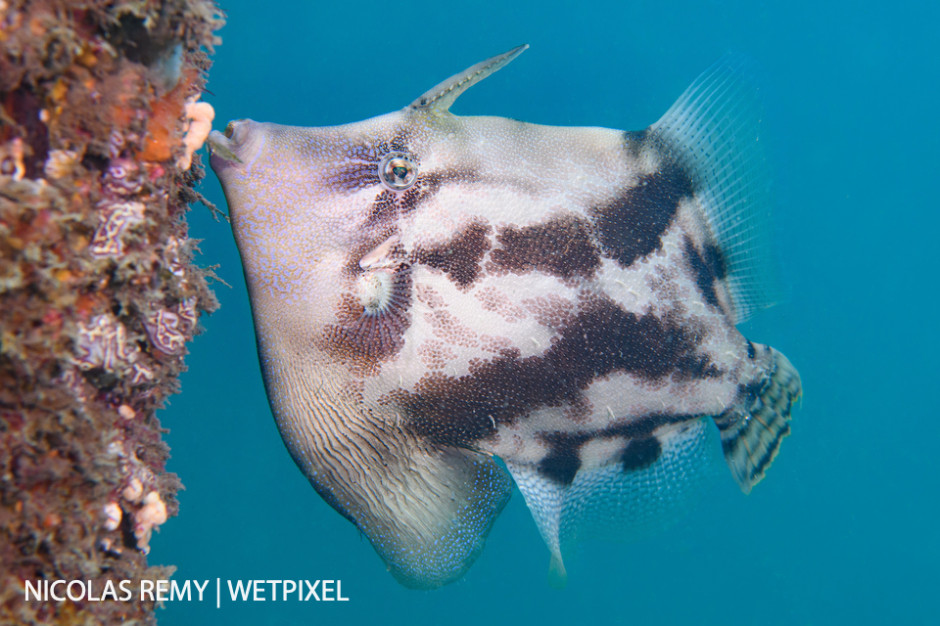
A fanbelly leatherjacket (Monacanthus chinensis) feeding under a jetty. Chowder Bay, Clifton Gardens (north Sydney).
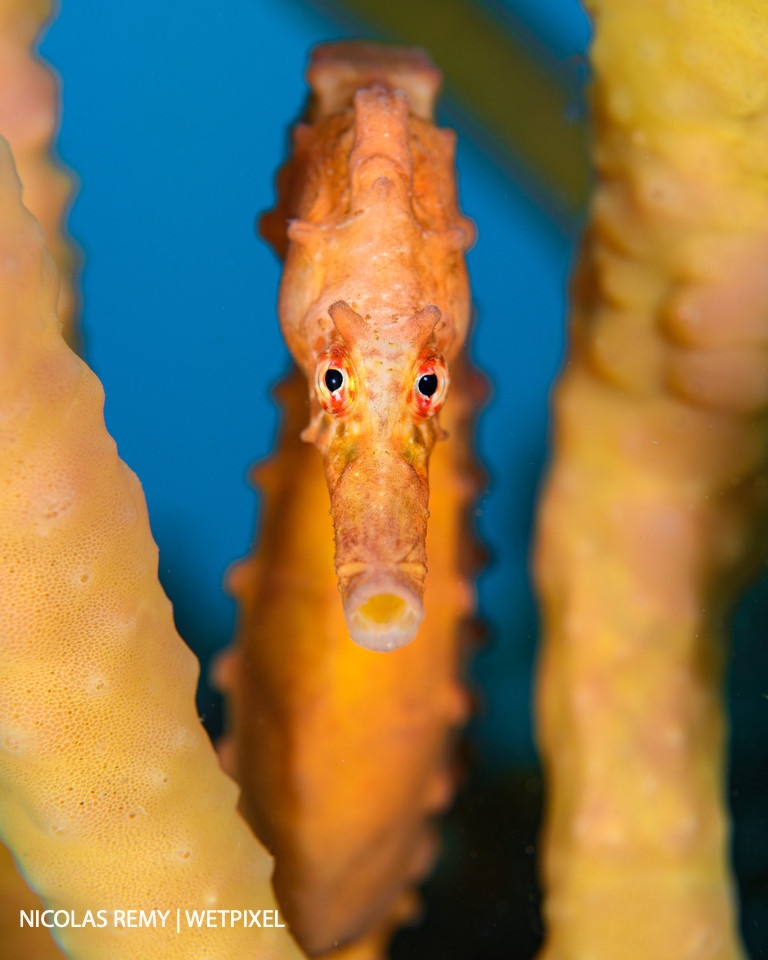
The potbelly seahorse (Hippocampus abdominalis), one of the world's largest seahorses often wraps its tail around sea tulips (Pyura spinifera). The Steps, Kurnell (South Sydney).
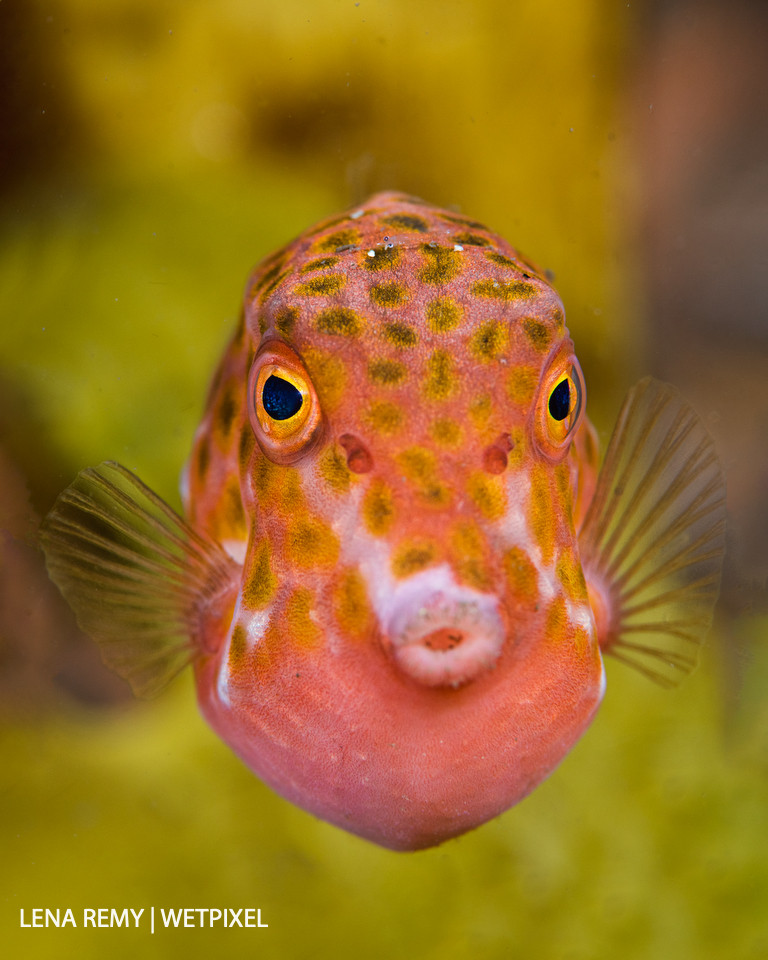
Another endemic species to Australia: the eastern smooth boxfish (Anoplocapros inermis). Bare Island, La Perouse.
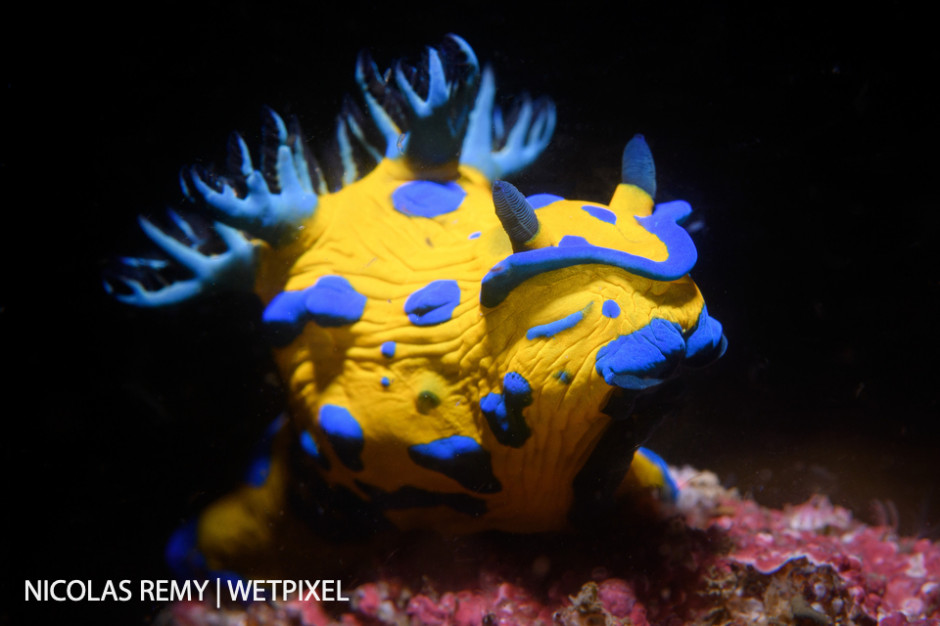
Verco's nudibranch (Tambja verconis), Bare Island, La Perouse.
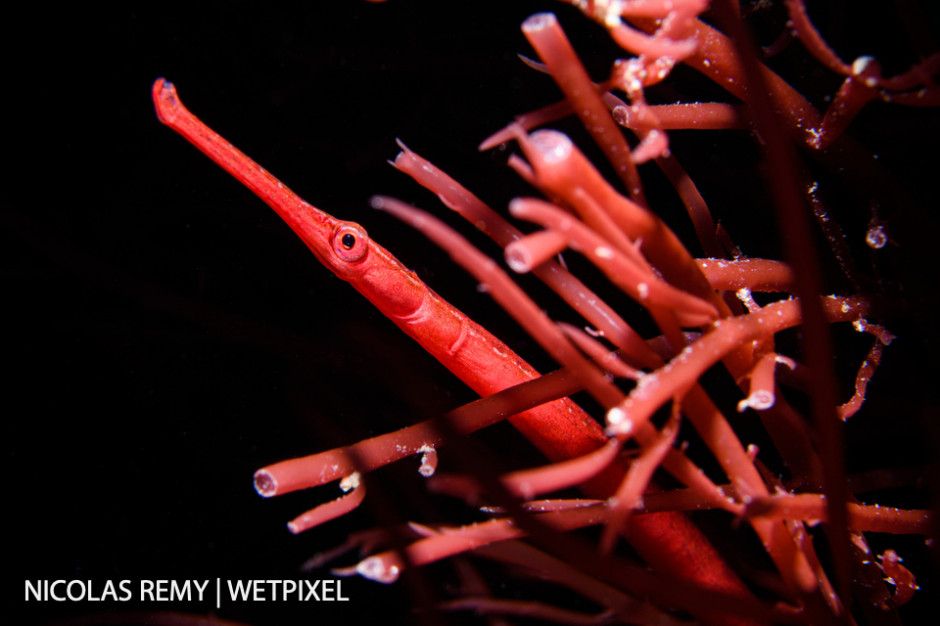
This red wide-bodied pipefish (Stigmatopora harastii) is a newly named species (November 2020), well camouflaged in red algae. The Steps, Kurnell (South Sydney).
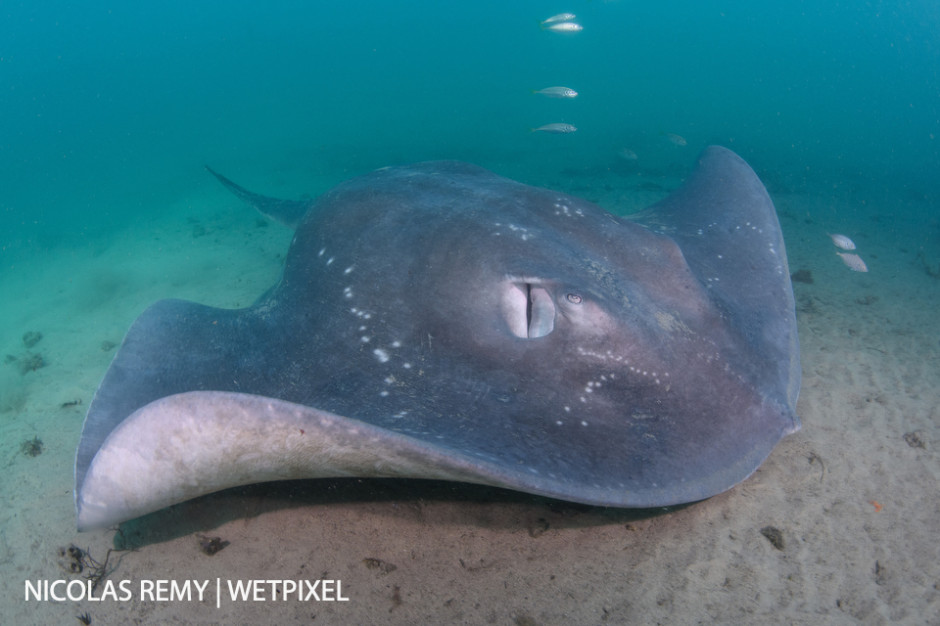
This large smooth stingray (Bathytoshia brevicaudata) was around 2 meters in length. Chowder Bay, Clifton Gardens (north Sydney).